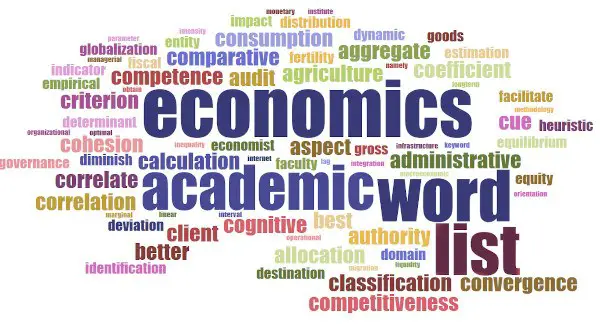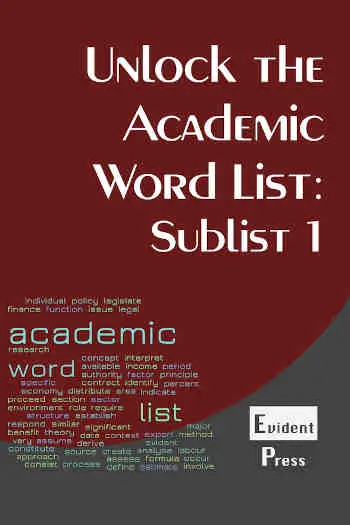Show AWL words on this page.
Show sorted lists of these words.


 







|
This page describes the Economics Academic Word List (EAWL), giving information on what the EAWL is, as well as a complete list of all words in the EAWL.
To explore the list more fully, try the EAWL highlighter (on this site) or the EAWL quizzes (external).
What is the EAWL?

The Economics Academic Word List (EAWL), developed by James O’Flynn at the University of Warwick (UK), is a list of 887 words which frequently appear in economics texts, but which are not contained in the New General Service List (NGSL). The 887 words of the EAWL are divided into 9 lists (called sublists) based on how frequent they are in economics texts. Sublist 1 contains the most frequent, while sublist 9 contains the least frequent. The EAWL makes up around 5.5% of the words in university economics texts in English, based on a corpus study of texts ranging from economics journal articles to economics dissertations.
While the Economics Academic Word List (EAWL) is similar to the Academic Word List (AWL), there are three significant differences which might make it more suitable for students of economics than the AWL. The first is that the EAWL is more up-to-date. It was developed as a specialised extension of the New General Service List (NGSL), which dates from 2013. This contrasts with the AWL, which, although fairly new (devised in 2000), was developed as an extension of the General Service List (GSL), which dates from 1953.
A second difference is coverage. Based on a validation study using the economics papers in the corpus of British Academic Written English (BAWE), the EAWL gives 5.5% coverage of words in texts, and approximately 90% coverage for the NGSL and EAWL combined. While the total for the EAWL is lower than the AWL (which has 10% coverage), it is higher when combined with the NGSL, since the GSL and AWL together have only 87% coverage.
A final difference is that the EAWL comprises fewer word forms than the AWL. The EAWL includes only inflected forms or variant spellings of words, rather than whole word families, meaning that although it has more headwords than the AWL (887 compared to 570), it has fewer word forms overall (1763 compared to 3112). An example is the word justification, which occurs in both lists. In the EAWL, only two forms are included, namely justification and the plural justifications. In the AWL, by contrast, there are a total of nine words in the word family, as follows: justify, justifiable, justifiably, justification, justifications, justified, justifies, justifying, and unjustified. This increase in the number of headwords and reduction in the total number of word forms makes the EAWL more practical and easier to master than the AWL.
References
O'Flynn, J. (2019). 'An Economics Academic Word List (EAWL): Using online resources to develop a subject-specific word list and associated teaching-learning materials', Journal of Academic Language & Learning, Vol. 13(1).
Economics Academic Word List
The list below contains all 887 headwords in the EAWL, along with sublist number, and related word forms. Words contain hyperlinks to the Wordnet dictionary, hosted on this site (definitions open in an alert box on the same page).



